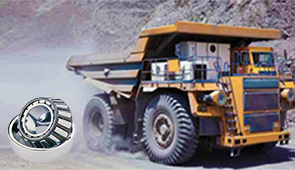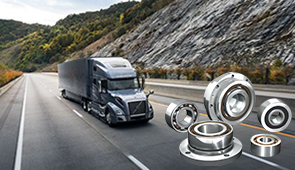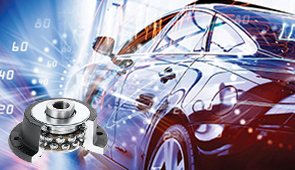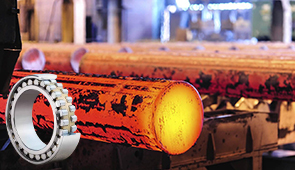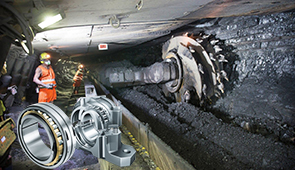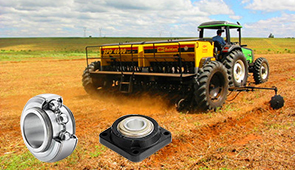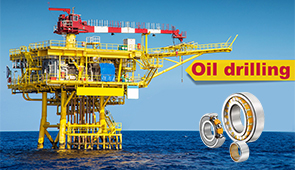The Essential Guide to Drive Shafts: Powering Your Car’s Performance
Drive shafts play a vital role in the functionality and efficiency of modern vehicles, acting as the critical component that transfers torque from the engine to the wheels. This guide is designed to provide a comprehensive understanding of drive shafts, exploring their importance, design, types, and common issues that impact their performance. Whether you are a car enthusiast seeking to deepen your technical knowledge or a professional in the automotive industry, this article will equip you with the foundational insights necessary to appreciate how drive shafts contribute to a vehicle’s overall operation. Through careful analysis and detailed explanations, we aim to highlight why maintaining and optimizing your vehicle’s drive shaft is indispensable for ensuring long-term performance and reliability.
What are the different types of drive shafts used in vehicles?
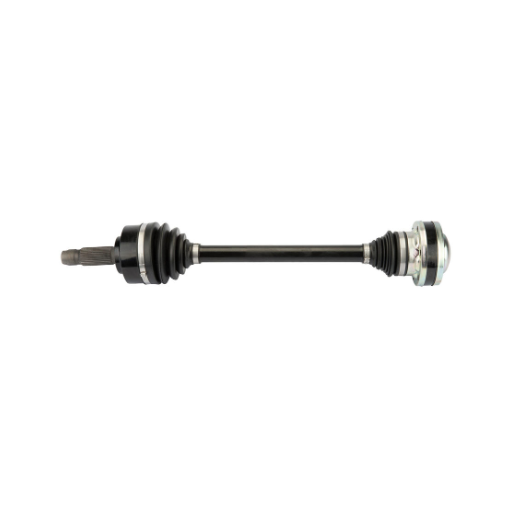
Solid vs. hollow drive shafts: Pros and cons
In my view, the main issue when comparing solid and hollow drive shafts is the balance between strength, weight, and efficiency. Indeed, solid drive shafts have exceptional performance and bear extreme torsional mechanical loading, making them quite suitable for durable and heavy-duty applications. For instance, industrial and heavy off-road vehicles make use of solid shafts because, to a lesser solid shaft torque values and high impact stresses are applied during operational functionality. One setback, however, is that their weight is greater, which can compromise fuel efficiency and the vehicle’s dynamics.
For example, hollow drive shafts are designed to be structurally sound and thus capable of being used in various automotive applications, but are lightweight. The reduced weight offers clear advantages in performance, such as improved acceleration and handling, as well as reduced wear on related drivetrain components. Technically speaking, these contribute to a lowered moment of inertia and together enhance effectiveness on rotation. However, a limitation of hollow shafts is that in comparison to solid shafts, these would not bear extreme torque values or abuse, which serves to limit their application hin heavy-duty scenarios.
In conclusion, the choice of solid and hollow drive shafts rests upon the particular requirements of the application at hand. Extreme cases or applications may place a unit with a solid shaft exceeding 500 Nm which is supported by its strength and resilience. Meanwhile, hollow shafts are more suited to vehicles which trevded in area of optimization and execution of highly speeded maneuvers while maintaining the structural integrity of the vehicle.
Front-wheel drive vs. rear-wheel drive shafts
Each system, whether front wheel drive (FWD) or rear wheel drive (RWD), has a different layout and function, and hence require different designs of drive shaft. FWD cars use constant velocity (CV) axles for transferring the output from the transaxle to the paired front wheels. These drive shafts are relatively short, with two CV joints, which are an inner and outer joint that allow for power flow through suspension motion and power steering direction. Important design features for FWD drive shafts are torque transmission capability, which is usually up to 300 Nm for normal passenger cars, and joint life under angular deflection, which is normally ±45° in motion.
Other than that, RWD systems use longer propeller shafts as the main output shaft from the transmission (it is sometimes also referred to as a driveshaft) to the rear, where in the differential it is split between the back wheels. These shafts can be either solid or tubular and generally have universal joints or constant velocity joints to compensate for angular displacement.
The selected system is conditioned by the vehicle’s expected performance, handling dynamics, and design features. The FWD drive shafts are designed with compactness and integration of the responsive steering in mind and are preferably suitable for passenger vehicles, and city commuting, In contrast, the RWD shafts have greater applicability in performance automobiles, trucks, and sports utility vehicles because of their superior torque and roughness durability.
What materials are typically used in shaft manufacturing?
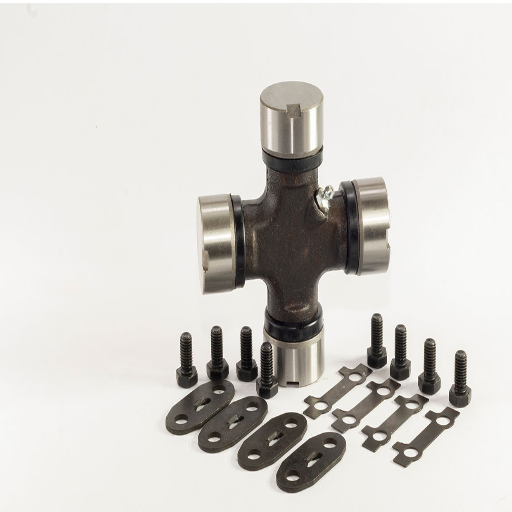
Common materials used for drive shaft production
The materials from which drive shafts are made were carefully selected because of their high strength-to-weight ratios, high durability, and fatigue resistance. Materials that are commonly used are:
- Steel: Because of its high tensile strength, durability, and large amount of torque that it can withstand, steel is the most commonly used material in drive shafts. The tensile strength of carbon steel is normally between 400 MPa and 550 MPa, whilst high strength alloy steels are above 900 MPa.
- Aluminium Alloys: Because aluminium has a low density and weighs only one-third of steel, it is preferred when weight reduction is crucial. Depending on the alloy composition, the ultimate tensile strength of different aluminium alloys is between 200 MPa and 450 MPa, which is why it is used in lightweight passenger vehicles.
- Composites: Because of the exceptional strength to weight ratio along with their resistance to torsional stress, carbon fiber composites are used for high-performance applications. Their cost is considerably high, but with a tensile strength of more than 1200 MPa , these materials are ideal for racing or high speed vehicles and are great for when low density is desired.
- Chromoly: This alloy provides superior fatigue resistance and is used for performance oriented vehicles. It has impressive tensile strength that ranges from 860 MPa and 1000 MPa and is perfect heavy duty applications.
Every material is chosen according to the specific operational needs like torque capacity, vehicle weight, vehicle cost, etc. Performance and safety targets in regard to the drive shaft design are heavily influenced by proper material selection.
How material choice affects shaft performance and durability
The choice of materials influences the mechanical behavior, efficiency, and functionality of a drive shaft, as well as its service life. For example, high-strength steel is fatigue-resistant and load-bearing due to its exceptional tensile strength, which is in the range of 860 MPa to 1000 MPa. As such, it is well-suited to heavy-duty and high-performance tasks that require the utmost rigid body response under stress.
Materials like aluminum alloys can reduce the shaft’s ratio of rotational inertia to weight, which improves fuel economy and handling. Aluminum is often used in scenarios that call for minimum weight owing to its tensile strength, which usually ranges from 200 MPa to 400 MPa, although it is weaker than steel in enduring extreme loads.
Carbon fiber composites is one option in advanced materials that possesses remarkable strength while remaining lightweight. These materials have tensile strengths over 1500 MPa and are lighter than steel and aluminum. Ensuring optimal torque with minimal vibrations and noise enables the materials to be best used in modern automotive designs.
- Tensile Strength (MPa): Having a high tensile strength aids in sustaining high loads without undergoing failure.
- Density (g/cm³): A lower density will improve energy efficiency and lessen the weight’s total mass.
- Fatigue Resistance: Determines the longevity of a material when subjected to repetitive loads.
- Cost-to-Performance Ratio: Measures the operational expenses against performance and dependability.
- Elastic Modulus (GPa): Determines the stiffness of the shaft along with its resistance to change in shape.
Choosing the correct material requires balancing these metrics, such as required torque, speed of rotation, and ambient conditions. The best material choice guarantees performance efficiency while further ensuring the safety and longevity of the drive shaft system.
What are the main causes of drive shaft failure?
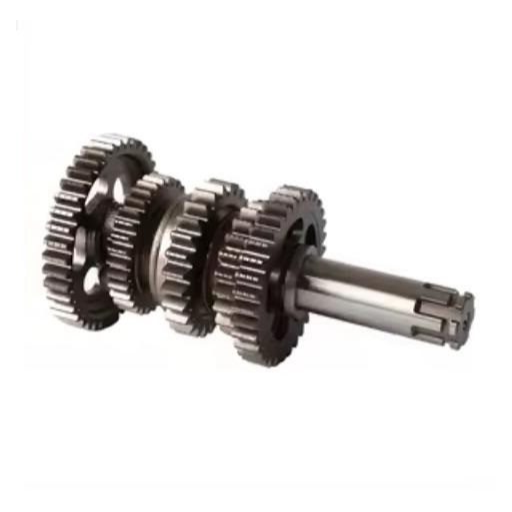
Common issues leading to shaft wear and tear
From my viewpoint, the major factors contributing to the wear and tear of the drive shaft seem to come down to a few important elements: lack of lubrication, misalignment, and undue torsional stress. Overtime, malfunctioning components suffer due to excessive friction caused by inadequate lubrication. Misalignment that occurs during installation or due to operational vibrations unevenly stresses the shaft and therefore affects its functionality and lifespan. Material fatigue and failure occurs when torque loads surpass the shafts functioned limits, resulting in excessive torsional stress.
- Torsional Strength: The shaft must be designed to identify, separate, and isolate the maximal operational torque moment acting upon them. High-strength steel alloys meet such demands effectively.
- Alignment Tolerances: For the best results, alignment should have some angular distance and be within a set degrees to not cause undue stress.
- Lubrication: These lubricants must have a reasonably high viscosity and a suitably low-temperature range to ensure smooth and maintenance-free operations.
Regular maintenance, however, can tackle operational misalignment as well as additional limiters to help enhance the durability and functionality of the drive shaft.
The impact of vibration on drive shaft longevity
With shaft vibration posing a threat to the longevity of drive shafts as it causes cyclic loading, fatigue, and potential misalignment, it becomes clear why prevention of vibration substantiating factors such as imbalance, misalignment, and component wear is important.
- Tolerance And Parallel Limits: Assess whether tight angular misalignment of 1 to 3 degrees coupled with parallel misalignment tolerances of 0.05 to 0.15 inch are met which depend on the application or design of the shaft system.
- Balance Grade: Make sure the shaft lower balance grade G6.3, recommended for high-speed applications, is adhered to reduce dynamic forces.
- Support Bearing Specifications: Ensure that the support bearings used ratched for the system operational speeds and axial loads supply adequate vibration damping performance.
- Periodic Inspections: Reduce operational speeds below seventy to seventy five percent of critical shaft speed in order to eliminate further resonating issues increasing vibration above the critical speed achieved by constancy of certain speeds.
Identifying and fixing vibrations caused by corrosion, wear, and looseness in surrounding components further diminish vibrations over time.
Signs of a failing drive shaft in your vehicle
A failing drive shaft often warns the driver with a wide array of symptoms. Some of these include:
- Intensity Vibrations: Constant vibrations felt under the vehicle’s center, particularly during acceleration or constant speed, should be a primary concern as it arises due to a lack of alignment or balance of the drive shaft. The number of vibrations should be compared with the industry standard, that the shaft circumference run out must remain under ±0.03 inches.
- Irregular Noise Production: Loose clicking, clunking or squeaky produced sounds during work of the machinery indicates the possibility of failure of the universal joints or more serious the working bearings.
- Difficulty Turning: Reduced binding maneuverability when turning might be an indicator that CV (Constant Velocity) joints are failing most especially with front wheel and all-wheel drive vehicles.
- Excessive Movement: Shafts are supposed to have a lateral and axial play within the range of 0.02-0.05 inches. play exceeding this range and resulting movement indicates other couplings, joints and center bearings might be worn out.
- Grease Leaks: Leakage of grease from the universal joints indicates unsealed bearing or worn out seals that necessitates swift action in order to get fixed.
These checks confirms if the drive shaft issues and faults are easily solved to ensure damage is mitigated. Regular tests and not overly stressing the drives shafts performance guarantees the drive shaft will always work as intended without feeling the hate of overly used tolerances.
How is shaft design optimized for automotive applications?
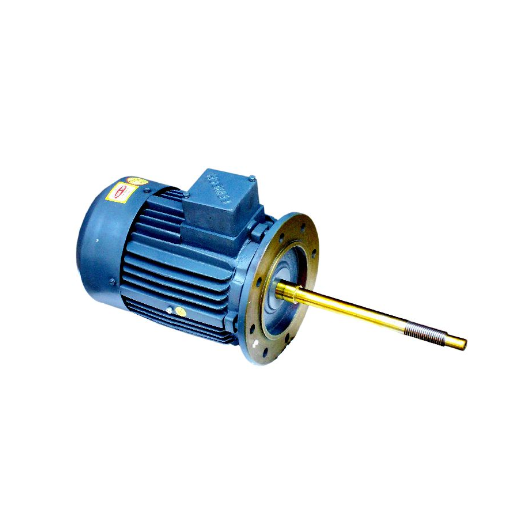
Key considerations in drive shaft design for cars
While analyzing the drive shaft design pertinent to automobiles, I focus on a few key elements that enable the component to work to maximum efficiency.
- Material Choice: The drive shaft has to be built from steel or aluminum alloys which have relatively high strength to weight ratio and are not susceptible to corrosion. This saves weight while having the necessary physical strength.
- Ratio of Length and Width: The drive shaft’s length and width are computed in accordance to the make and model of the vehicle. A longer drive shaft must have a larger diameter to avoid bending or critical speed resonance which defines safe operational speeds – generally 70-120% of the shaft’s critical speed.
- Twisting Power: There must be enough twisting power that will not exceed the torque from the engine. The material’s properties along with the cross-sectional geometry are configured to withstand the maximum torque loads which is commonly given in Nm orlb-ft.
- Vibration Reduction: To increase the the efficiency of the drive shaft, it must be dynamically balanced to avoid vibrations while rolling. If there is any imbalance it could result in waste to the bearings and connected parts. The alignment tolerances are generally above 0.05 degrees and that is what is aimed during the set up.
- Type of Joints: The selected joints are universal or CV joints according to the need to have angular misalignment with some flexibility of the drivetrain. Width and angle of the movement, usually around 15 to 20 degrees for amU joints, are bolted in the construction.
- A Durability Assessment: The moisture, debris, and extreme temperature exposure to which the drive shaft is subjected has been taken into account in design protective coatings or treatments. This ensures prolonged life and consistent operation.
Considering these above mentioned factors along with strict guidance of policies, specifications, and regulations, I intend to design a precise economical, efficient, and effective drive shaft system to suite the requirements of a particular automobile drivetrain.
Balancing weight and strength in shaft manufacturing
The strike of the balance between weight, strength, and structure design of the shaft requires careful selection of the materials and exact calculations of engineering value. For that, I leverage offerable materials such as aluminum combined with carbon fiber while ensuring safety through reinforcement techniques and optimized designs. For instance, aluminum alloys, especially 7075-T6, have relative weight atustrium and yield strength of approximately 503 and bear excellent shaft properties. Otherwise, carbon fiber composite shafts are best for an aimed minimum of inertia of rotation because of their strength and relative lightness.
- Specific Strength (s-st): The most important for maintaining excessive dumped energy of changing motion. For carbon fiber, exceeds 300 kN·mm/kg
- Moment of inertia: Restores energy, every increment made reduces rotation energy lost through friction and air in movement. Generally achieved with hollow shaft designs that have optimal wall thickness.
- Fatigue Limit: Involves extreme reliability on testing cycles, e.g, screening of various materials under rotating eccentric masses.
By optimizing these systematically, I achieved the best features of shaft performance without amazing endurance attributes.
What maintenance is required to ensure proper drive shaft function?
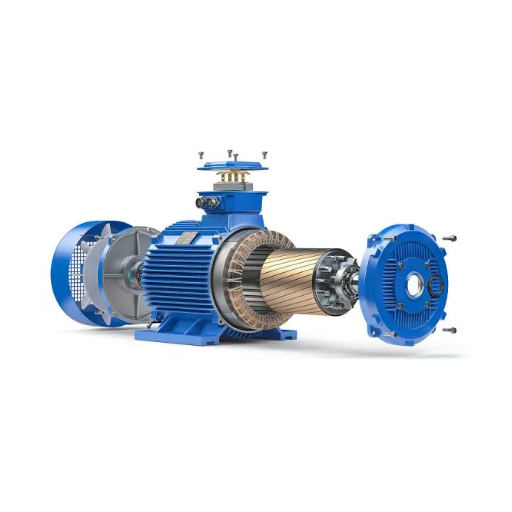
Regular inspection and maintenance tips for drive shafts
To ensure the proper functioning of the Drive Shaft, I suggest the following steps for inspection and maintenance:
- Visual Inspection: Make periodic inspections for indication of wear or corrosion such as dents, cracks, and deformation. Special emphasis must be placed on the regions surrounding the joints and connection points. Issues identified at this early stage would not cause too much pre-existing damage upon inspection.
- Joint Lubrication: Use the recommended grease type to lubricate universal joints, CV joints and other joints on a regular basis in order to reduce friction and wear on the joints. For more advanced grease applications, high-quality lithium grease does the trick.
- Balancing and Alignment: Check the alignment and balance of the drive shaft with its parts on it to avoid vibrations during operational phases. Such imbalances would cause premature bearing wear with reduced efficiency. Typical balance tolerances are around ±0.1 mm of optimized performance.
- Fastener Inspection: Inspect all bolts, nuts, and any fastening elements linking the drive shaft together and confirm whether the fulfilled torque requirements; if not, ensure they are as such. For example, the flange connection bolts require additional tightening of 50-70 N· m, depending on their design.
- Bearing and Seal Inspection: Inspect for worn components and broken seals or leaks. Alter parts as integral to the system as such to maintain order as to not contaminate the surroundings.
- Validation of the Clearance: Check the operational leeway of the drive shaft to verify that any expected heating along with angular movement while working is within acceptable limits. In most cases, a coefficient thermal expansion of <=10 x 10^-6/degree centigrade is reasonable for nominal operations.
Following these maintenance procedures and controlling these metrics enables me to effectively optimize the length of useful life of the drive shaft, with the minimum reliability and operational performance requirement.
When to replace your vehicle’s drive shaft
Parts of a car undergo normal wear and tear during its scheduled use and replacing a vehicle’s drive shaft becomes obligatory when specific signs are looked to be present, as these can indicate possible performance issues or structural decline.
- Vibrations During Operation: Excessive vibrations, especially during higher speeds, is a problem experienced due to imbalance or wear in the drive shaft parts. In most cases, this is caused by misaligned shafts, worn universal lower side, or damaged bearings.
- Unusual Noises: Acceleration or deceleration results in clicking, clunking, or rattling noises, which means that certain parts like universal joints or CV joints have worn-out parts and thus need to be replaced.
- Loss of Torque Transfer Efficiency: If there is less power transfer from the engine to the wheels, this might result from some joints getting damaged or the shaft is deformed, thus reducing the drive’s effectiveness.
- Visual Damage: I suggest looking to the body of the shaft for bends, cracks or bare minimum visible wear. Compromised structural bends necessitate immediate replacement as they severely impact the integrity.
The combination of these checks enables me to make a confident decision when either replacement or further procedure is justified. Timely action on the drive shaft keeps it from operational breakdowns and greatly minimizes the chance of whole vehicle repairs, which tend to be much more expensive.
The importance of proper lubrication for drive shaft components
The components of the driveshaft require proper lubrication which enhances friction reduction and wear displacement between moving parts in order to maintain their efficiency and longevity. Proper lubrication facilitates supremely effective movement in universal joints and CV joints while also preventing the excessive heat buildup in other components which could prompt failure.
- Viscosity: For operational efficiency over a wide range of loads and temperature, lubricating grease should be kept to the recommended viscosity grade (NLGI Grade 2).
- Temperature Tolerance: Depending on the system specification, the operating temperature range of lubricants used on the drive shafts is usually between -40°F to 300°F, so these must be effective within that range.
- Additives: Use lubricants with anti wear mo lithium disk sulfide and corrosion inhibitors to extreme conditions to enhance performance and durability.
- Application Frequency: Employees should perform lubrication depending on usage, for universal joints, regular intervals should be approximately every, 6,000-10,000 miles or as specified from the manufacturer.
This way, drive shaft components are in optimum condition for a longer time, which reduces mechanical failure and lengthens service life.
Frequently Asked Questions (FAQs)
Q: What is an automotive drive shaft, and what is its primary function?
A: An automotive drive shaft, also known as a propeller shaft or cardan shaft, is a mechanical component that transmits power from the engine’s transmission to the vehicle’s wheels. Its primary function is to transfer rotational force, allowing the car to move forward or backward. The drive shaft is a crucial part of the drivetrain system, enabling power transmission and ensuring efficient motor performance.
Q: How does a drive shaft transmit power in cars?
A: A drive shaft transmits power in cars by connecting the transmission to the differential. As the engine’s crankshaft rotates, it transfers power to the transmission, which then sends it through the drive shaft. The shaft work involves rotating at high speeds to transmit this power to the final drive, which ultimately turns the wheels. This process of transmitting mechanical power is essential for the car’s movement and performance.
Q: What materials are drive shafts typically made from?
A: Drive shafts are typically made from strong and lightweight materials to ensure durability and efficiency. Common shaft materials include steel, aluminum, and carbon fiber composites. Steel is often used for its strength and cost-effectiveness, while aluminum offers a good balance of strength and weight reduction. Carbon fiber is increasingly popular in high-performance applications due to its excellent strength-to-weight ratio and ability to withstand high torque loads.
Q: Can electric motors use drive shafts for power transmission?
A: Yes, electric motors can use drive shafts for power transmission, although the configuration may differ from traditional internal combustion engines. In electric vehicles, the drive shaft may connect the electric motor to the wheels, transmitting the motor’s rotational force. However, some electric vehicle designs use direct drive systems or hub motors, which can eliminate the need for a traditional drive shaft, potentially improving motor efficiency and reducing mechanical complexity.
Q: What is a longitudinal shaft, and how does it differ from other types?
A: A longitudinal shaft is a type of drive shaft that runs along the length of the vehicle, typically found in rear-wheel drive and four-wheel drive vehicles. It transmits power from the transmission at the front of the car to the rear differential. This differs from transverse shafts, which are shorter and run across the width of the vehicle, commonly used in front-wheel drive cars. Longitudinal shafts are designed to handle the specific requirements of transmitting power over a longer distance and accommodating the vehicle’s suspension movement.
Q: How does a transfer case relate to the drive shaft in four-wheel drive vehicles?
A: In four-wheel drive vehicles, the transfer case is an essential component that works in conjunction with the drive shaft. The transfer case is connected to the transmission and splits the power between the front and rear drive shafts. This allows for power to be transmitted to both the front and rear axles, enabling four-wheel drive capability. The drive shaft connected to the transfer case plays a crucial role in distributing power evenly to all four wheels, enhancing traction and off-road performance.
Q: What are some common signs of a failing drive shaft?
A: Common signs of a failing drive shaft include unusual vibrations while driving, clunking or knocking noises, particularly when shifting gears or accelerating, and difficulty in turning the vehicle. You may also experience shuddering when accelerating from a stop, or notice increased play in the u-joints. In severe cases, a failing drive shaft can cause loss of power to the wheels or even vehicle breakdown. Regular inspection of the drive shaft and its components is essential for maintaining optimal performance and safety.
UCTH213-40J-300 with Setscrew(inch)
CNSORDERNO: Normal-duty(2)
TOGN: UCTH213-40J-300
SDI: B-R1/8
SD: 2 1/2
UCTH212-39J-300 with Setscrew(inch)
CNSORDERNO: Normal-duty(2)
TOGN: UCTH212-39J-300
SDI: B-R1/8
SD: 2 7/16
UCTH212-38J-300 with Setscrew(inch)
CNSORDERNO: Normal-duty(2)
TOGN: UCTH212-38J-300
SDI: B-R1/8
SD: 2 3/8
UCTH212-36J-300 with Setscrew(inch)
CNSORDERNO: Normal-duty(2)
TOGN: UCTH212-36J-300
SDI: B-R1/8
SD: 2 1/4
UCTH211-35J-300 with Setscrew(inch)
CNSORDERNO: Normal-duty(2)
TOGN: UCTH211-35J-300
SDI: B-R1/8
SD: 2 3/16
UCTH211-34J-300 with Setscrew(inch)
CNSORDERNO: Normal-duty(2)
TOGN: UCTH211-34J-300
SDI: B-R1/8
SD: 2 1/8









